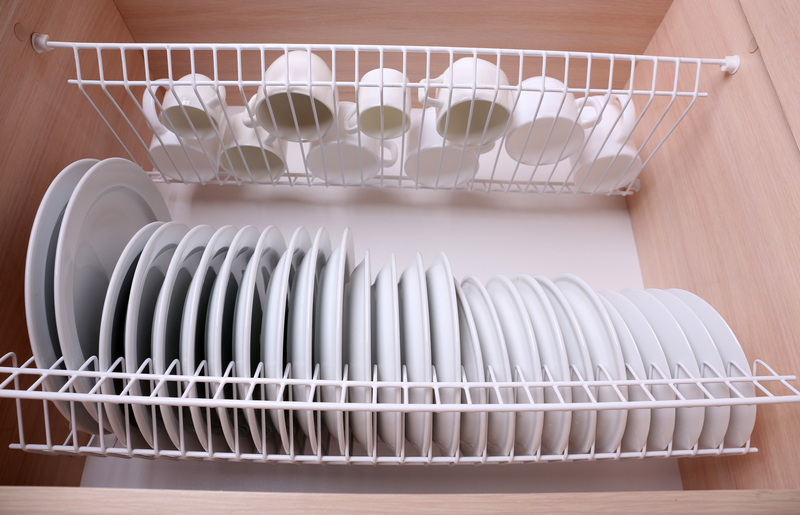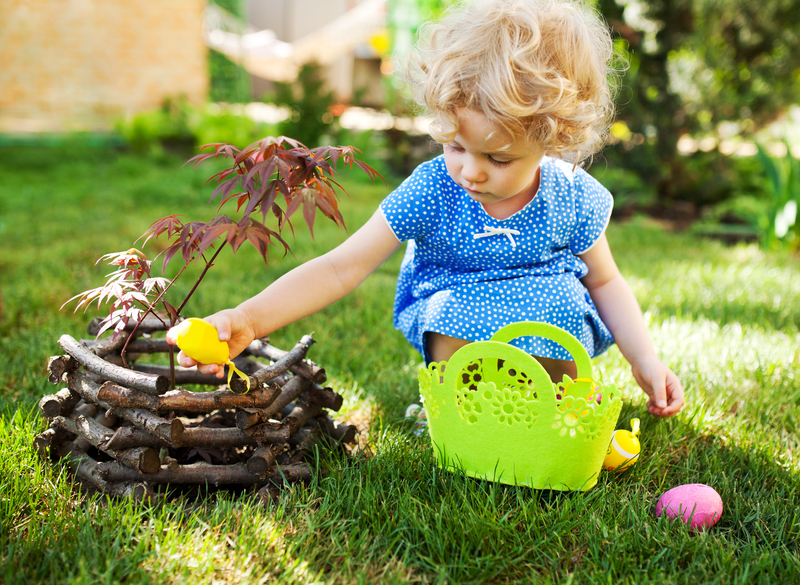Unlock the Key to a Spotless Stovetop: Banishing Burnt-On Residue
Posted on 01/07/2025
Unlock the Key to a Spotless Stovetop: Banishing Burnt-On Residue
Is your stovetop covered in stubborn, burnt-on residue that seems impossible to remove? Whether you're a daily home cook or an occasional chef, keeping your stovetop gleaming and clean can be a frustrating challenge. In this comprehensive guide, we'll unlock the secrets to a perfectly spotless stovetop and show you how to banish burnt-on stains and residue for good. From chemical-free solutions to expert tips for all stovetop types, you're about to discover a cleaner, safer kitchen, and a newfound pride in your cooking space!
Why Does Burnt-On Residue Stick to Your Stovetop?
Understanding the science behind burnt-on residue helps you prevent it and remove it more effectively. When food spills, splatters, or boils over onto a hot stovetop, the high heat carbonizes sugars and fats, literally baking them onto the surface. Over time, repeated spills and improper cleaning allow these residues to build up, forming stubborn layers that seem welded in place.
- Glass and ceramic stovetops: Especially susceptible to baked-on residue since the smooth surface can make cleaning both easier and trickier.
- Gas stovetops: Crumbs and spills can accumulate around burners and in small crevices.
- Electric coil stovetops: Drip pans beneath coils often collect burnt-on messes that are overlooked.
But don't worry! With the right approach, you can restore your stovetop to its best state, regardless of its type.

The Essential Toolkit for Spotless Stovetop Cleaning
Before diving into the cleaning process, assemble your cleaning supplies. Having the proper tools ensures efficiency, effectiveness, and protects your stovetop's finish.
Must-Have Cleaning Supplies:
- Non-abrasive sponges or microfiber cloths
- Plastic or silicone scraper (for glass/ceramic surfaces)
- Baking soda and distilled white vinegar
- Mild dish soap
- Old toothbrush (for tight spots)
- Spray bottle
- Rubber gloves
- Dedicated stovetop cleaner (optional for stubborn stains)
_Never use steel wool, harsh abrasives, or razor blades unless explicitly recommended by your stovetop's manufacturer._
Step-by-Step Guide: How to Remove Burnt-On Residue from Every Stovetop
1. General Cleaning Method: Prepping the Stovetop
- Ensure the stovetop is completely cool before starting.
- Remove stovetop grates, knobs, burners, and drip pans (if applicable).
- Wipe loose debris with a dry microfiber cloth.
- Soak removable parts in warm, soapy water while you work on the stovetop surface.
2. Banishing Burnt-On Residue from Glass or Ceramic Cooktops
Glass or ceramic stovetops require a gentle but effective touch to avoid scratching.
- Spray the surface with a solution of equal parts vinegar and water. Let it sit to soften residue.
- Sprinkle baking soda liberally over burnt spots.
- Cover with a damp microfiber cloth and let the mixture fizz for 10-15 minutes.
- Gently scrub in circular motions, focusing on stubborn stains.
- Use a plastic or silicone scraper to lift persistent residue--hold the scraper at a 45-degree angle.
- Wipe clean with a fresh damp cloth, then buff dry for a streak-free shine.
For extremely tough, burnt-on residue, repeat the process or use a stovetop cleaning cream designed for glass surfaces.
3. How to Remove Burnt-On Stains from Gas Stoves
Gas stovetops have multiple components, and burnt-on residue can hide in hard-to-reach places.
- Soak grates, burner caps, and knobs in warm, soapy water for at least 30 minutes.
- Use an old toothbrush to scrub crevices, burner heads, and other small areas.
- For tough spots, make a paste from baking soda and water. Apply, let sit, and gently scrub.
- Wipe down the stovetop surface with a vinegar solution and microfiber cloth.
- Rinse and dry all removable parts before reassembling.
Never submerge any electrical components, and always ensure everything is completely dry before using the stove.
4. Restoring Electric Coil Stovetops
Burnt messes often collect under the coils and in drip pans.
- Carefully remove electric coils (if your model allows) and set them aside.
- Soak drip pans in soapy water with a splash of vinegar.
- Scrub with baking soda paste to lift stubborn, burned residue.
- Wipe the stovetop surface with a vinegar and water mixture.
- Dry all parts thoroughly before reassembling.
Pro Tips to Prevent Burnt-On Residue in the Future
- Wipe up spills immediately: The longer spills sit, the harder they are to clean.
- Use stovetop covers or liners: Especially for gas and electric coil models, they catch drips and can be washed easily.
- Don't cook on high heat unless necessary: High temps increase the chance of splatter and burnt-on residue.
- Clean as you cook: Multitask! Use downtime to wipe up splatters and keep surfaces under control.
- Commit to a weekly cleaning routine: It takes minutes, but prevents build-up of burnt-on gunk.
Spotlight on Eco-Friendly and Chemical-Free Cleaning
Many commercial cleaners feature harsh chemicals. If you're committed to a greener home, these natural alternatives are both effective and safe:
- Lemon juice: Naturally acidic and antibacterial; combine with baking soda for extra power.
- White vinegar: Cuts through grease and neutralizes burnt-on residue.
- Baking soda: Slightly abrasive, deodorizes, and lifts tough stains without scratching.
- Castile soap: Gentle but effective at breaking down food and grease.
Mixing these into a paste or spray tackles even persistent stains without toxic fumes or residues--safe for children and pets!
Recipe: DIY Burnt Residue Blaster
- 1/4 cup baking soda
- 2 tablespoons white vinegar
- Juice from half a lemon
- A dash of dish soap
Mix until it forms a paste. Apply to affected areas, let bubble, then scrub and wipe clean.
When to Call in the Professionals
_Despite your best efforts, severe or chronic burnt-on residue may require professional intervention._ If you can't remove residue without risking damage, or your stovetop suffers from years of neglect, contact a professional cleaning service. They have specialized tools and products designed to restore even the grimiest stovetops, saving time and stress.

Frequently Asked Questions About Spotless Stovetops
Can you use a razor blade on a glass stovetop?
Only with caution: Some manufacturers recommend specifically designed razor scrapers. Use gently, at a low angle, and never on a hot surface to avoid scratching.
What's the fastest way to clean burnt-on messes?
Baking soda and vinegar are quick and effective! Apply, let fizz, and then scrub with a non-abrasive sponge. For small fresh spills, use a damp cloth while still warm (but not hot to the touch).
Are stovetop cleaners safe for all types?
Always check the label. Buy cleaners labeled as safe for your stovetop material (glass, ceramic, or metal). Improper products can etch, cloud, or destroy protective coatings.
How often should you deep-clean your stovetop?
Weekly cleanings prevent build-up and are much easier than tackling months-old residue.
Transform Your Kitchen with a Spotless Stovetop
Banishing burnt-on residue from your stovetop is easier than you think with a little know-how and the right techniques. Consistent cleaning not only makes your kitchen look better but also prolongs the lifespan of your appliances and creates a healthier cooking environment.
Remember:
- Act fast on spills and messes
- Use gentle, effective cleaning solutions
- Be aware of your stovetop's material and best practices
- Make deep-cleaning a regular habit
With these tips, tricks, and best practices, you'll unlock the key to a spotless stovetop and banish burnt-on residue for good. Happy cooking, and enjoy your sparkling kitchen!




